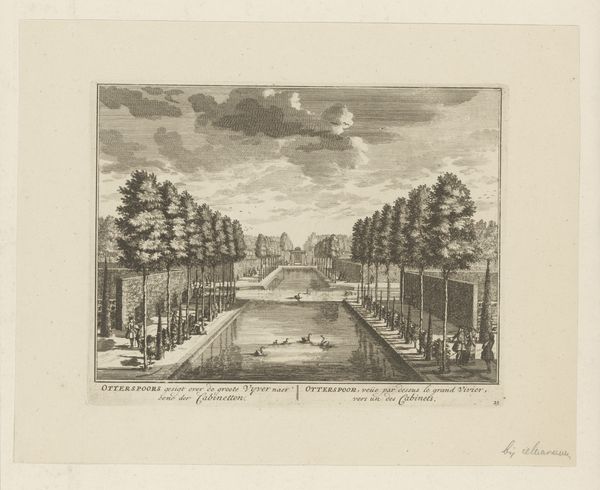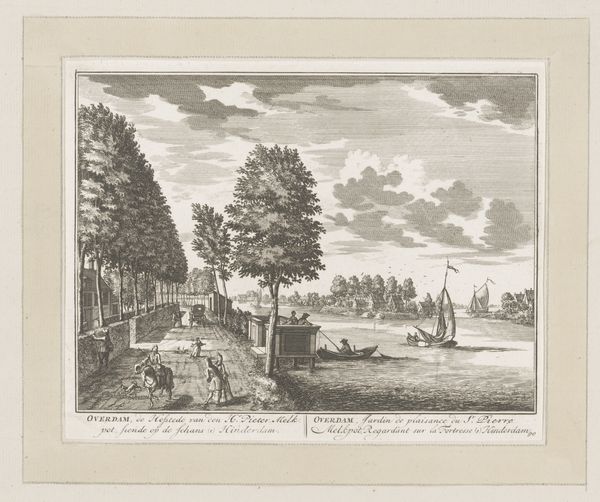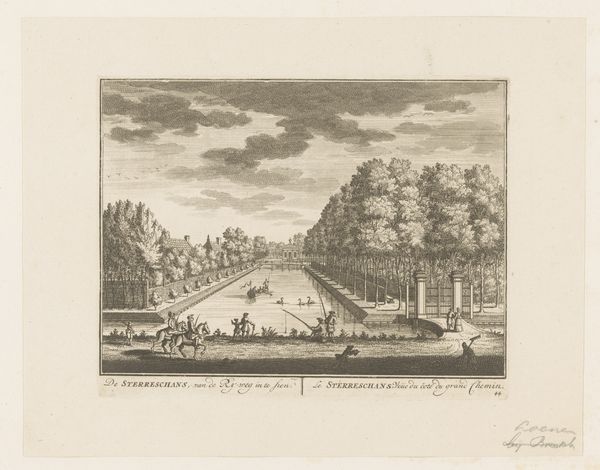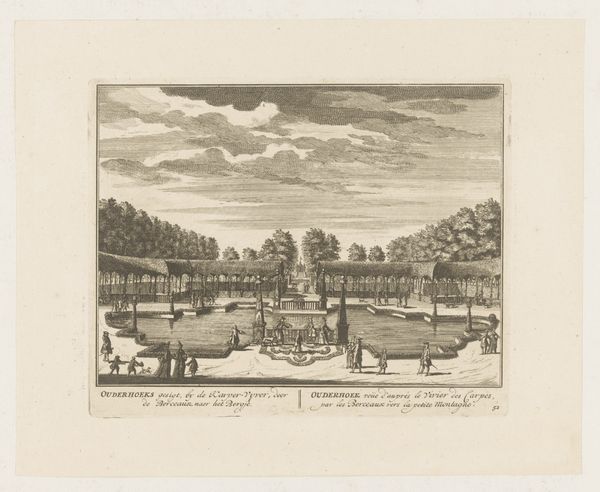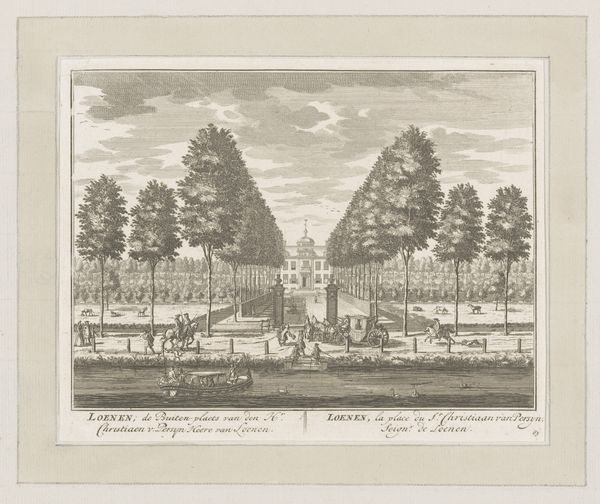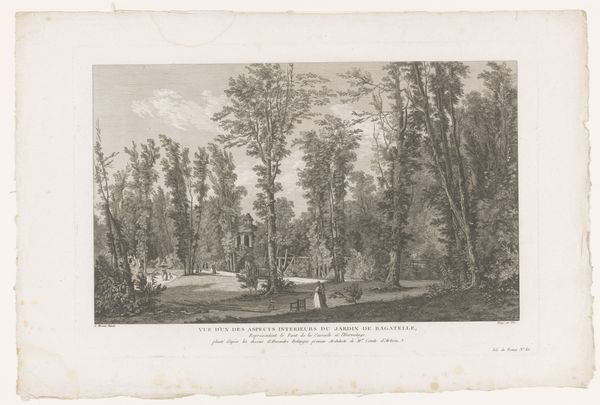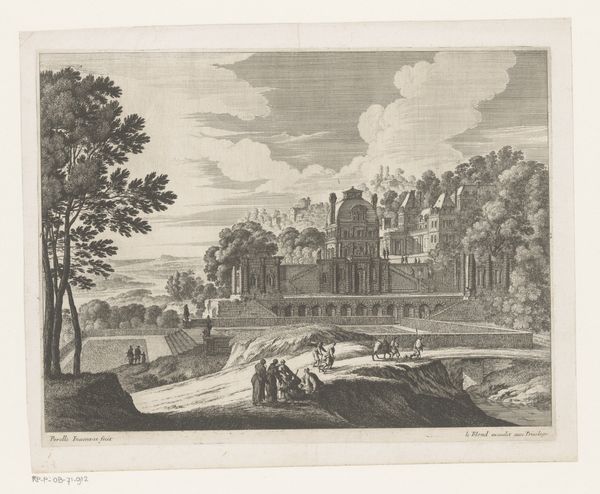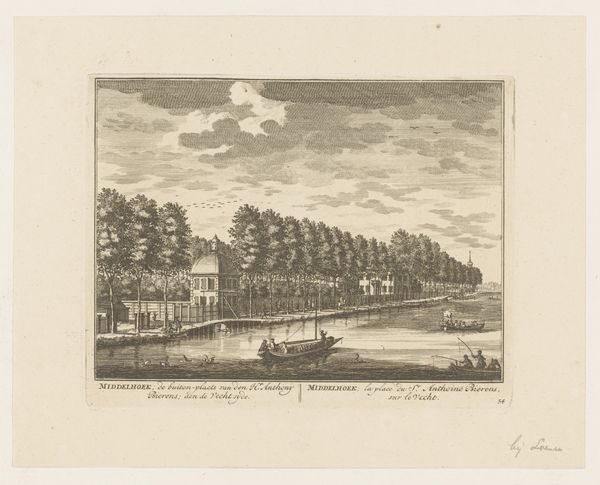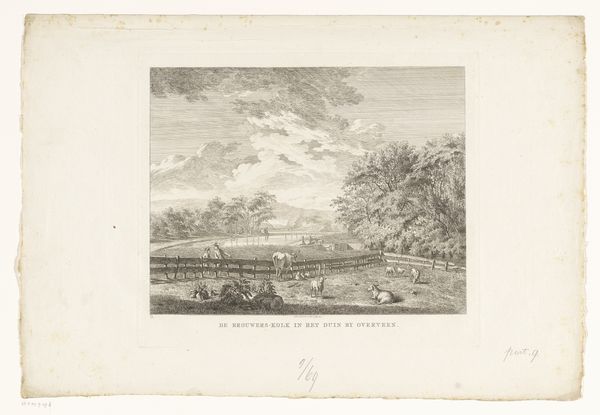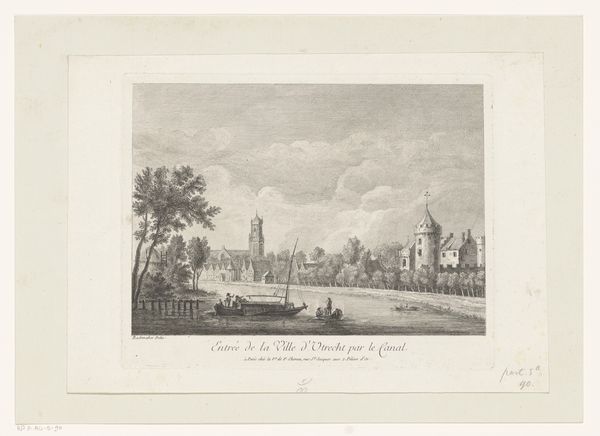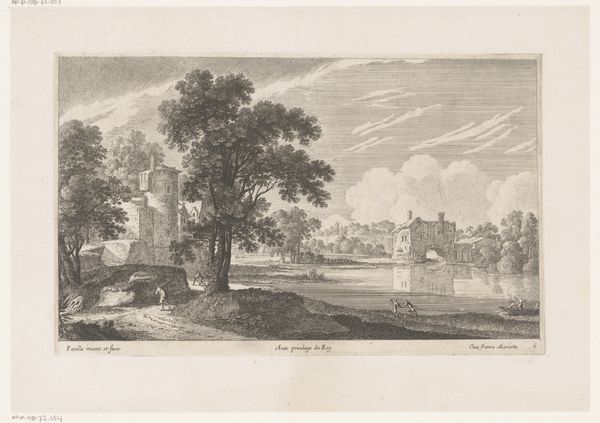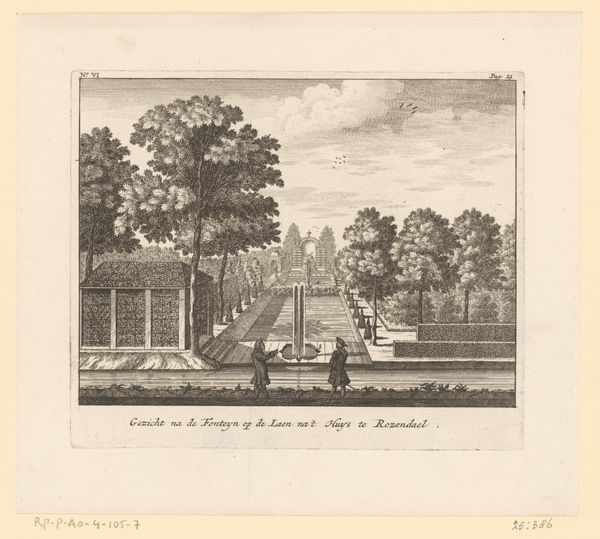
print, engraving
#
baroque
#
dutch-golden-age
# print
#
old engraving style
#
landscape
#
cityscape
#
engraving
Dimensions: height 170 mm, width 287 mm
Copyright: Rijks Museum: Open Domain
Curator: This is "Gezicht op Sas van Gent," or "View of Sas van Gent," an engraving by Jan Caspar Philips, dating to around 1740. It’s part of our collection here at the Rijksmuseum. Editor: It's strikingly peaceful. The soft light, the way the engraver captured the clouds… there’s a real sense of tranquility. A very balanced composition, despite the detail. Curator: Philips created this during a time of significant urban development in the Dutch Republic. Prints like this were popular, almost like postcards, circulating images of growing cities and engineering marvels. Sas van Gent, for example, was strategically important for its canal and waterways. Editor: Right, the viewpoint reinforces that. You see the canal, the activity on the water, and then further back, what seems to be well-tended pleasure grounds. I’m curious about the printmaking process. How would something like this be made back then, layer by layer? Curator: Exactly. Engraving involved meticulous work—cutting lines into a metal plate, inking it, and then pressing it onto paper. This allowed for relatively easy reproduction, compared to painting. It's how knowledge and imagery spread through society. Editor: The medium informs the message. It's about disseminating information, but also creating an image that speaks to order and control. Even the figures along the wall, they seem like observers, witnesses to this Dutch mastery of the landscape. You notice the precision, almost an engineer's perspective, capturing everything within a neatly organized grid. Curator: I agree. This also served political and cultural purposes; such works would reinforce a sense of national pride and project an image of prosperity. Note the detail of the architectural features and well-dressed observers. Editor: But look closer. You see those ordinary laborers working by the canal. The print doesn’t shy away from including their role. Even an idealized view relies on the labor, the physicality of making this a wealthy, navigable town. Curator: Good point. The choice to include the common worker emphasizes, maybe even legitimizes, the socio-economic foundations of such development. It's not *just* an image of aristocracy and serene canals, it acknowledges the people who worked to build and maintain this. Editor: It definitely adds depth. This print goes beyond just a picturesque scene. It brings to mind questions around labor, materiality and how a city truly functions. Curator: Absolutely. Seeing it through your materialist lens highlights aspects that might otherwise fade into the background. Editor: Likewise, understanding its historic context truly enriches how one may examine its tangible features.
Comments
No comments
Be the first to comment and join the conversation on the ultimate creative platform.
